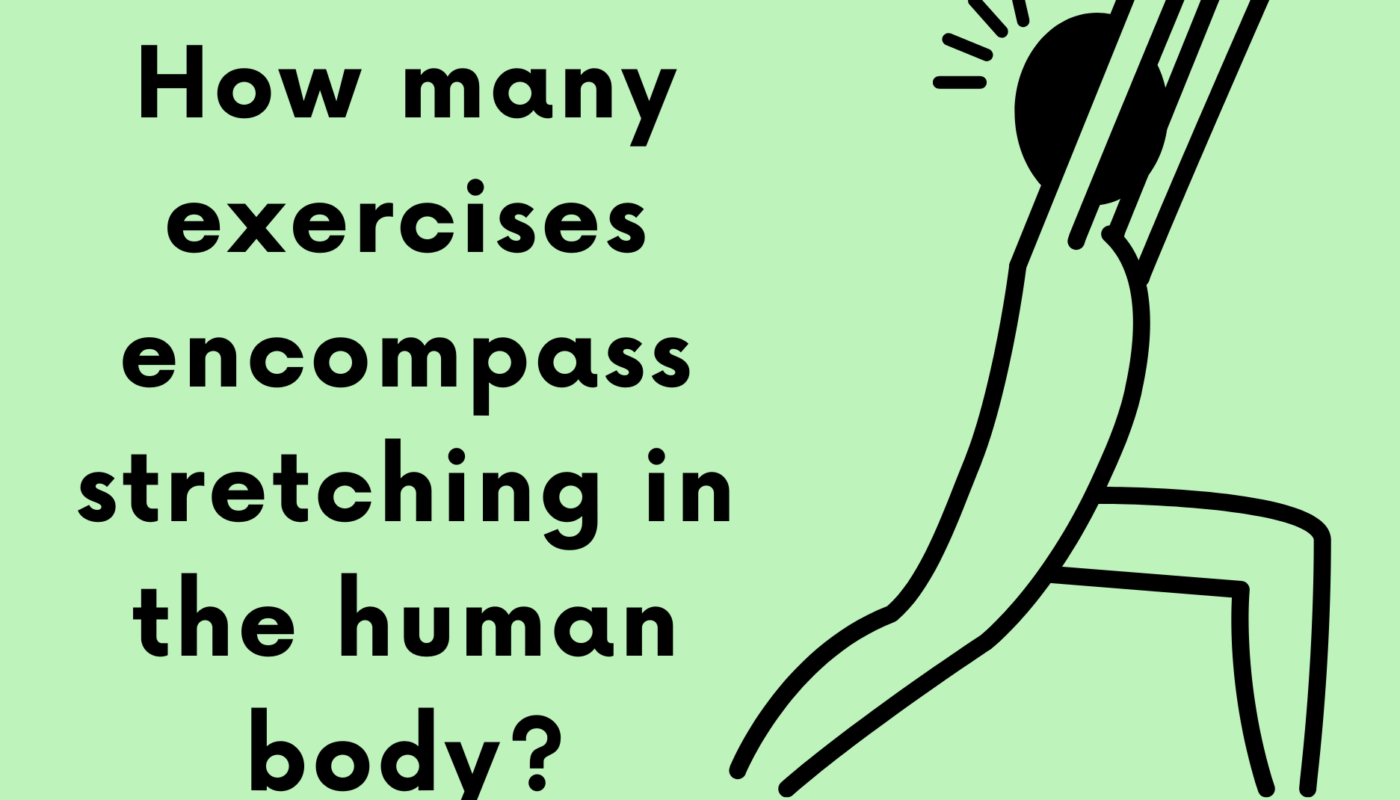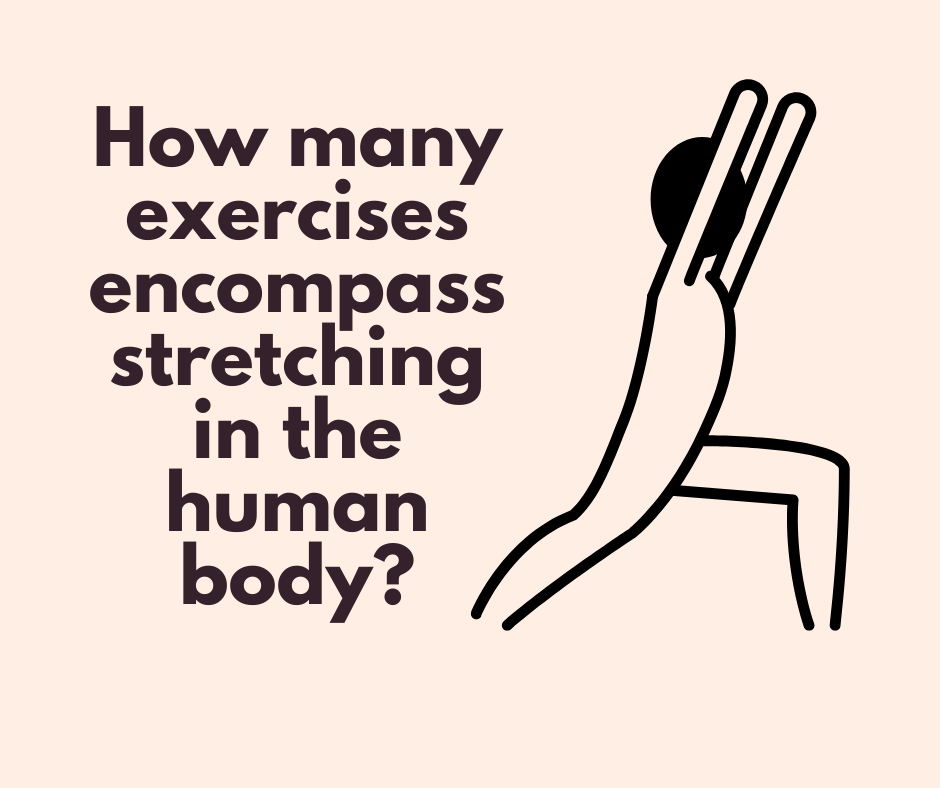How many exercises encompass stretching in the human body?
Stretching is an essential component of any workout routine. It helps to increase flexibility, range of motion, and prevent injuries. But, how many exercises encompass stretching in the human body? In this blog, we’ll explore the different types of stretches, the benefits they offer, and how to incorporate them into your workout routine.
What Are the Different Types of Stretches?
There are various types of stretches that target different muscle groups in the human body. The most common types of stretches include:
Static Stretching
Static stretching involves holding a stretch in one position for a period of time, usually 10-30 seconds. It is an excellent way to increase flexibility and range of motion. Examples of static stretches include hamstring stretches, calf stretches, and quad stretches.
Dynamic Stretching
Dynamic stretching involves moving the body through a range of motion to warm up the muscles before a workout. It is an excellent way to improve flexibility, mobility, and coordination. Examples of dynamic stretches include high knees, butt kicks, and leg swings.
PNF Stretching
PNF stretching (proprioceptive neuromuscular facilitation) is a technique that involves contracting and relaxing the muscles being stretched. It is an effective way to increase flexibility and range of motion quickly. Examples of PNF stretches include partner stretches, such as the hamstring stretch.
Ballistic Stretching
Ballistic stretching involves bouncing movements to force the body beyond its normal range of motion. It can be dangerous and is not recommended for beginners.
What Are the Benefits of Stretching?
Stretching offers numerous benefits, including:
Improved Flexibility
Stretching helps to increase flexibility, which is essential for everyday activities and athletic performance.
Reduced Risk of Injury
Stretching helps to improve range of motion and prevent injuries, such as strains and sprains
Improved Posture
Stretching can improve posture by releasing tension in tight muscles and promoting alignment.
Reduced Muscle Soreness
Stretching can help to reduce muscle soreness after a workout, making it easier to continue exercising.
Improved Athletic Performance
Stretching can improve athletic performance by increasing flexibility, range of motion, and coordination.
How to Incorporate Stretching into Your Workout Routine?
Now that you know how many exercises encompass stretching in the human body and the benefits they offer, let’s talk about how to incorporate stretching into your workout routine.
Warm-Up Stretches
Start with a few dynamic stretches to warm up the body before a workout. This will help to improve flexibility, mobility, and coordination.
Post-Workout Stretches
After a workout, perform a few static stretches to help reduce muscle soreness and improve flexibility.
Yoga and Pilates
Yoga and Pilates are excellent ways to incorporate stretching into your workout routine. Both practices focus on flexibility, strength, and balance.
Stretching Classes
Many fitness studios offer stretching classes, such as stretching and mobility, which focus on improving flexibility and range of motion.
What are some other optional exercise you can choose for a healthy body?
There are different types of exercise you can do some of the important ones are:
- Simple upper body exercise crossword
- Cherry pickers exercise
- Lemon squeezer exercise
- Cross crawl exercise
FAQs about exercise and fitness:
How might regular cardiorespiratory exercise affect hypertension?
Regular cardiorespiratory exercise can have a positive impact on hypertension, also known as high blood pressure. When you engage in regular aerobic exercise such as running, cycling, or swimming, your heart and lungs work together to deliver oxygen and nutrients to your muscles. This increased demand for oxygen causes your heart to beat faster and your blood vessels to dilate, which can lead to a reduction in blood pressure over time.
Can varicose veins disappear with exercise?
While exercise cannot make varicose veins disappear completely, it can help improve the symptoms and slow down their progression. Varicose veins occur when the valves in the veins become weak or damaged, leading to blood pooling and resulting in the characteristic bulging and twisting of the veins.
Regular exercise can help improve blood circulation and strengthen the muscles that surround the veins, which can help prevent blood from pooling and alleviate symptoms such as pain, swelling, and fatigue. Low-impact exercises such as walking, cycling, and swimming are generally recommended for individuals with varicose veins, as high-impact exercises can worsen symptoms. Here are some of the best exercises to remove discomfort of veins.
How long before a blood test can I exercise?
The timing of exercise before a blood test can vary depending on the type of test you are having. In general, it is recommended to avoid strenuous exercise for at least 24 hours before a blood test that measures levels of certain enzymes and proteins in the blood, such as creatine kinase or troponin, as exercise can temporarily elevate these levels and lead to false positives.
For tests that measure blood glucose, lipid levels, or hormones, it is recommended to fast for several hours before the test, and to avoid eating or drinking anything except water. It is generally safe to engage in light to moderate exercise before these types of tests, as long as you are adequately hydrated and have not consumed any food or beverages that could affect the results.
How soon can I exercise after epidural steroid injection?
The timing of exercise after an epidural steroid injection can vary depending on the individual and the specific type of injection. In general, it is recommended to avoid vigorous exercise and heavy lifting for the first 24-48 hours after the injection to allow the medication to fully take effect and reduce the risk of complications.
After the initial 24-48 hours, light exercise such as walking or gentle stretching may be resumed, as long as it does not cause significant pain or discomfort. It is important to listen to your body and not push yourself too hard, as overexertion can worsen pain and delay healing.
Note: Before beginning any exercise regimen, you should always consult with your healthcare provider or a qualified fitness professional to ensure that the exercises you choose are appropriate for your fitness level and overall health. You should also have a little bit idea about the concept “Exercises information theory” It will be a plus point. Exercises information theory is the study of how information is transmitted, processed, and stored in biological systems through physical activity, and how this knowledge can be applied to optimise exercise programs and performance.
Conclusion:
In conclusion, exercise can have a variety of effects on the human body, from improving cardiovascular health to reducing the risk of chronic diseases. However, it is important to approach exercise safely and with caution, and to follow any specific instructions provided by healthcare providers regarding timing and intensity of exercise. With proper care and attention, exercise can be a valuable tool for promoting overall health and wellbeing.
Read more blogs by visiting the link below:
https://family-fitness-fun.com/win-win-food-delicious-healthy-eating/





